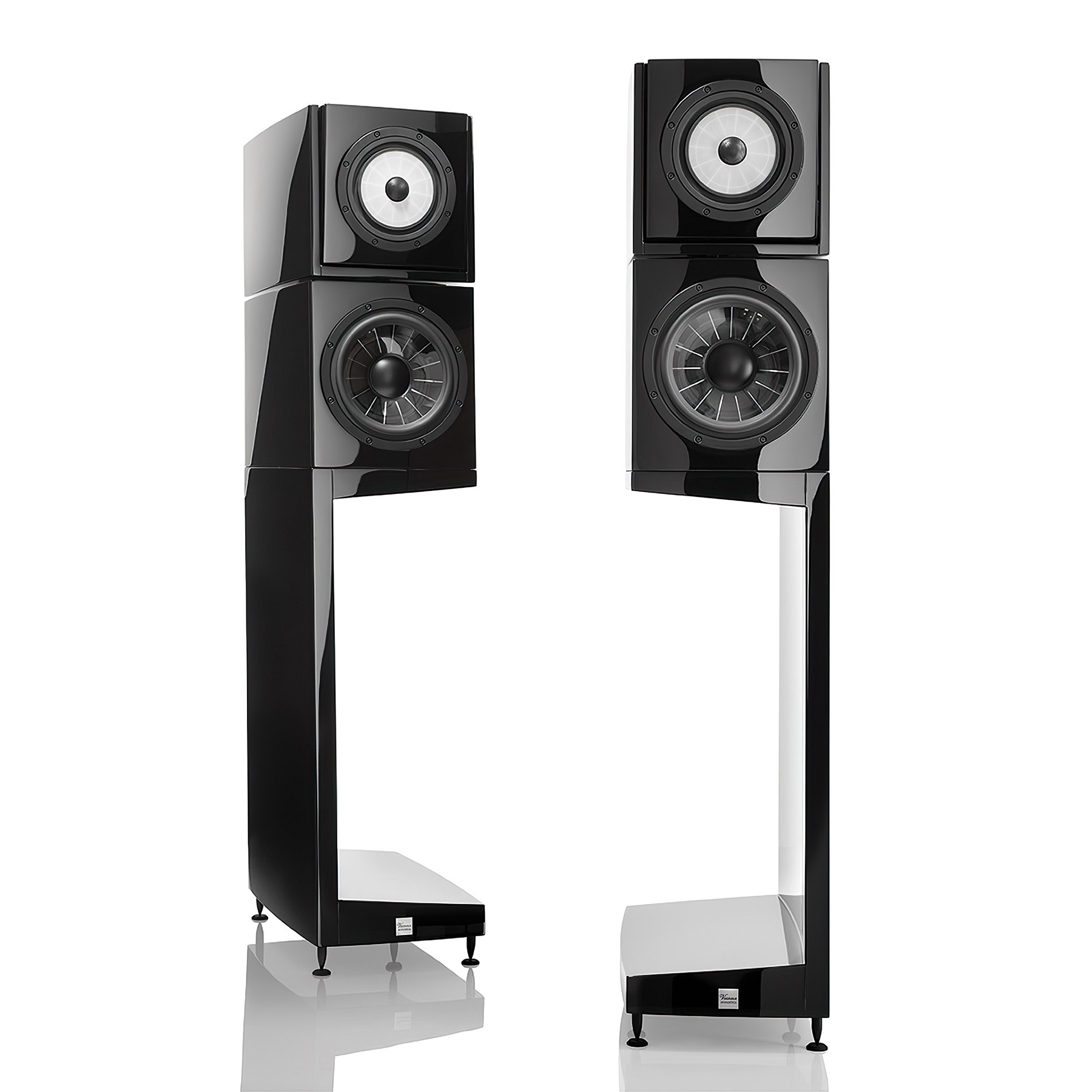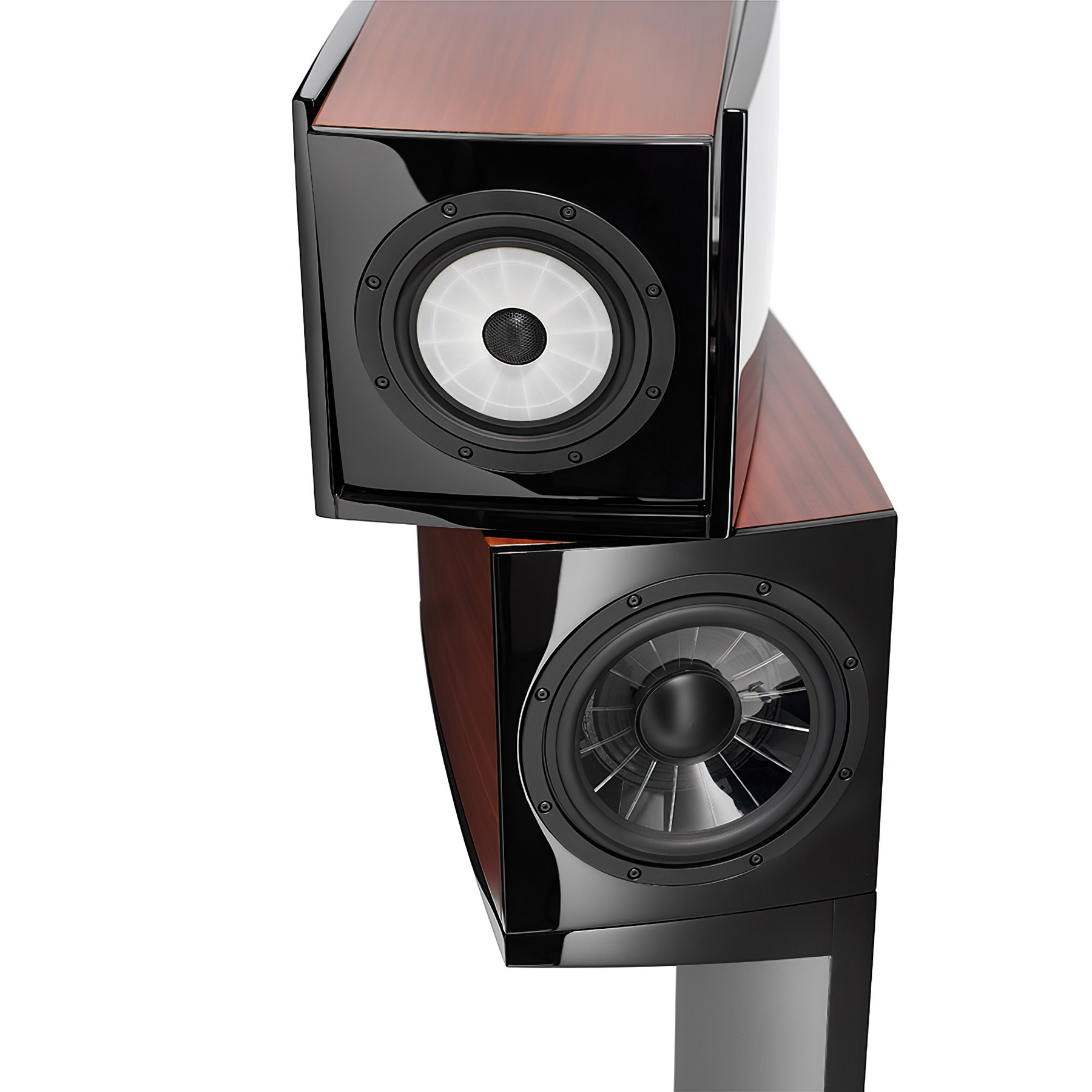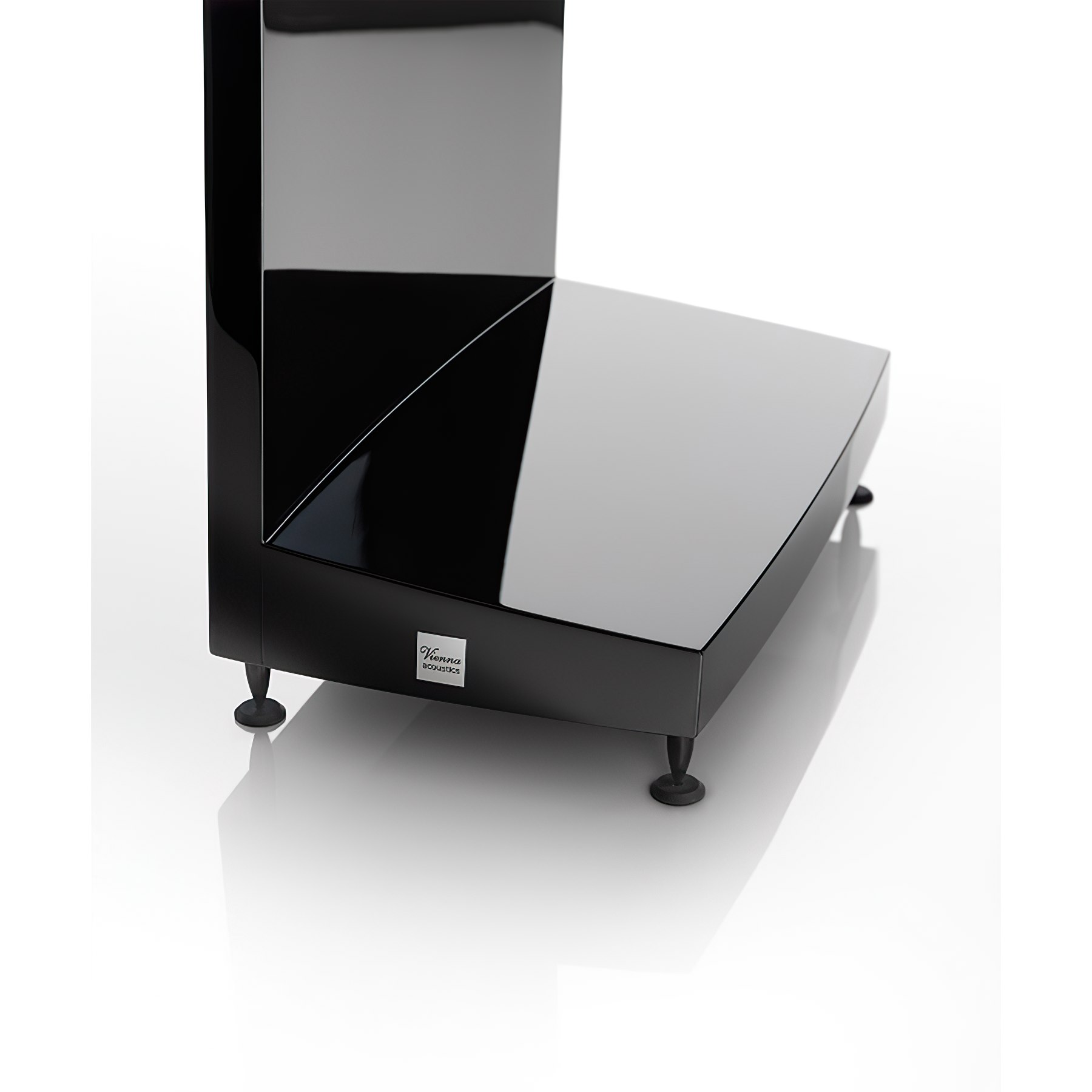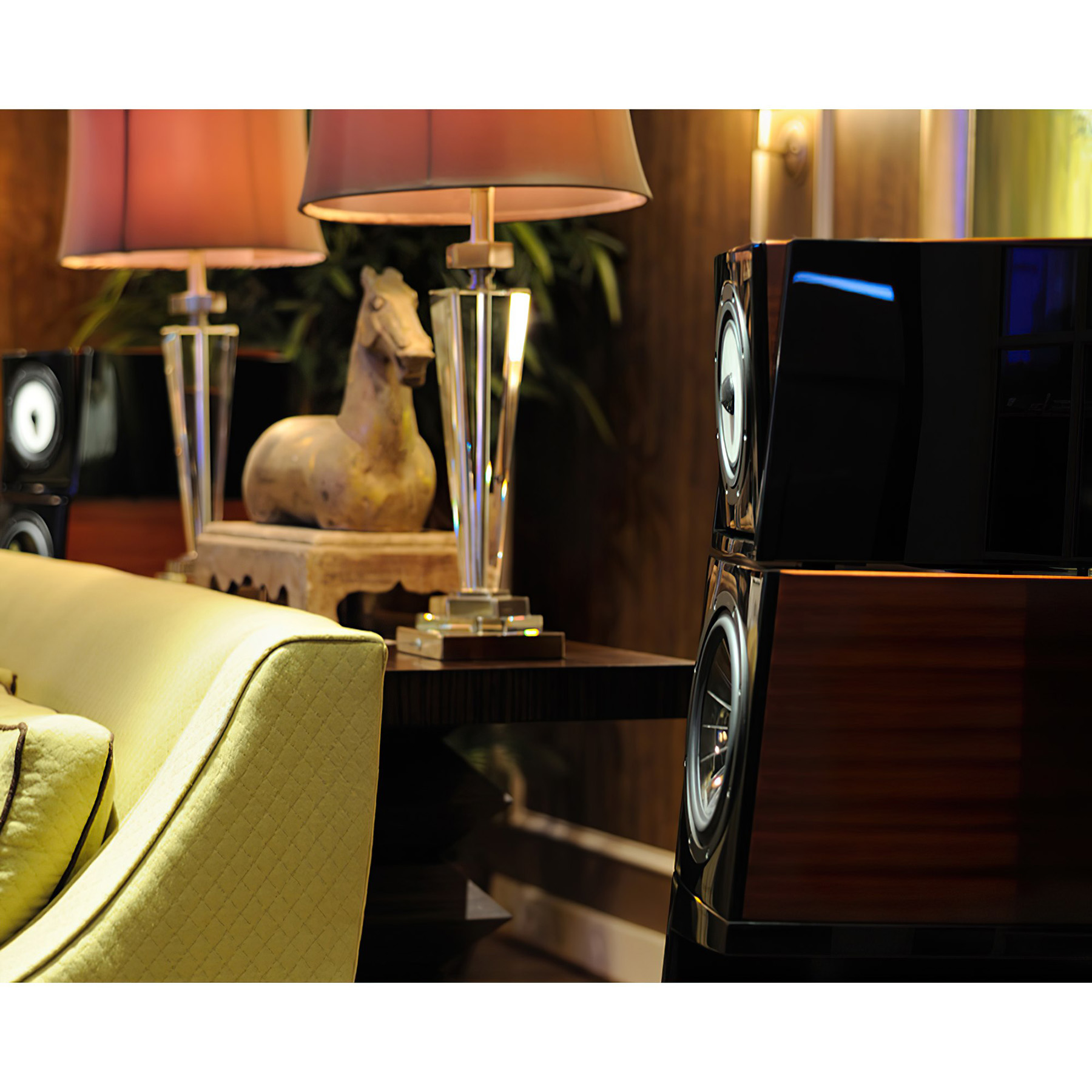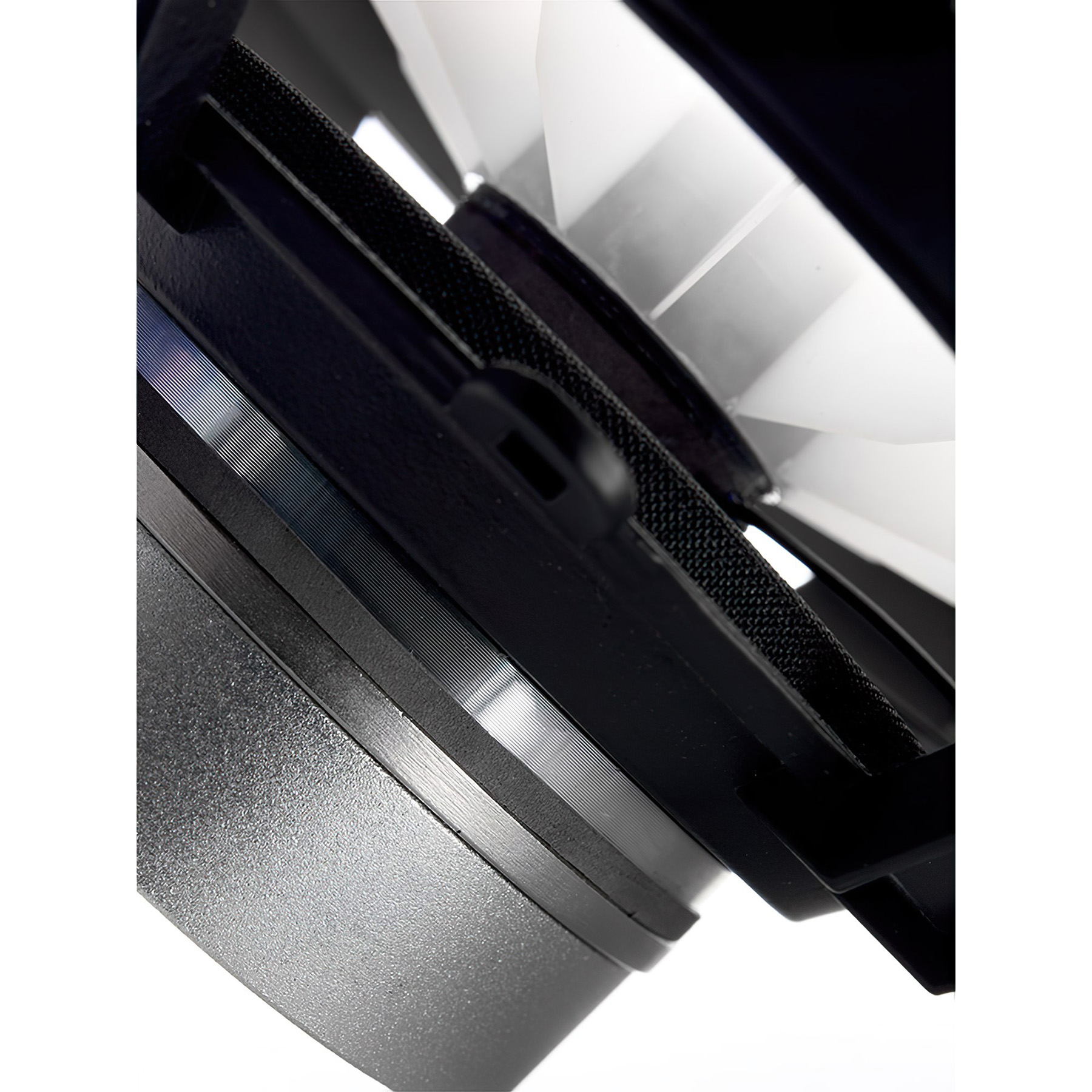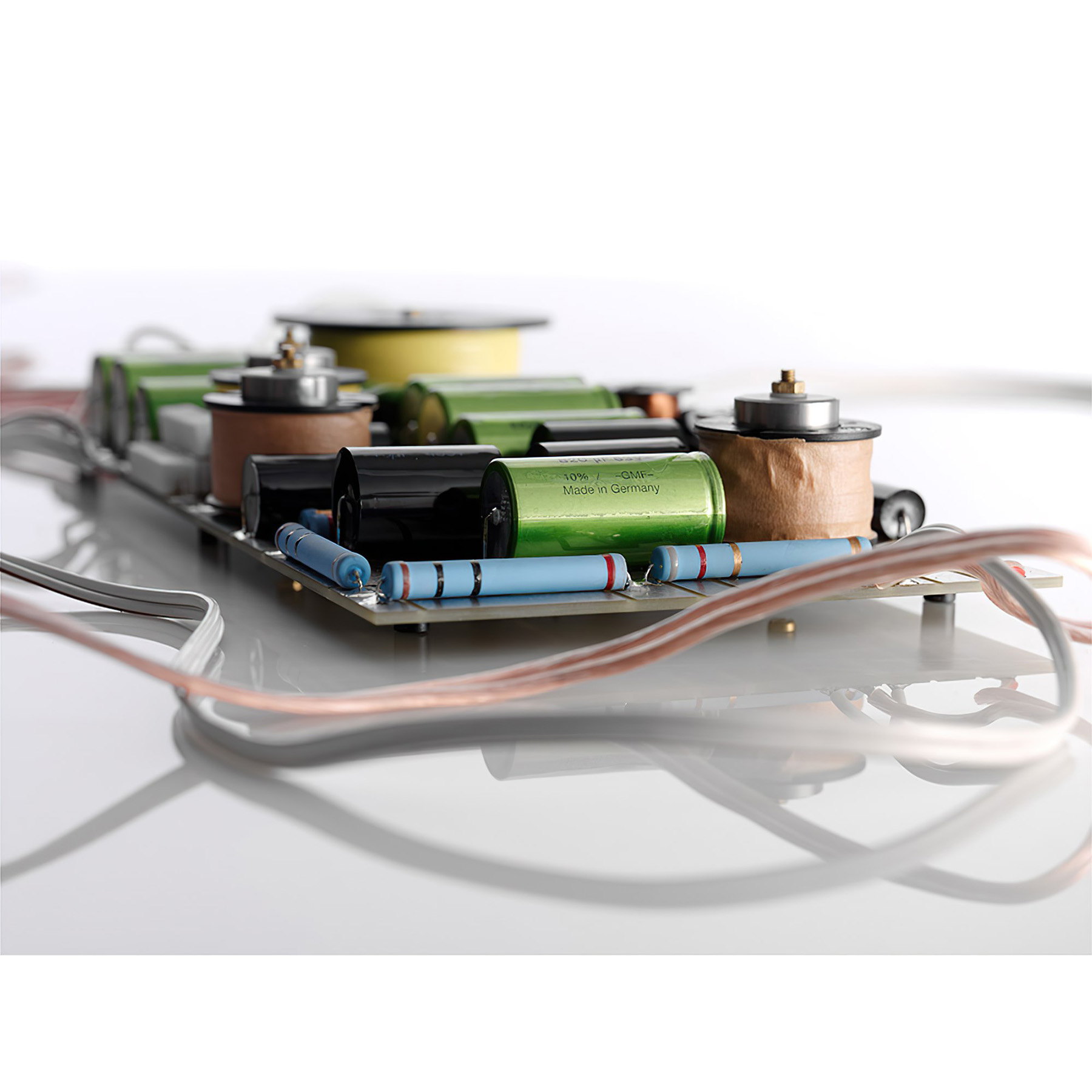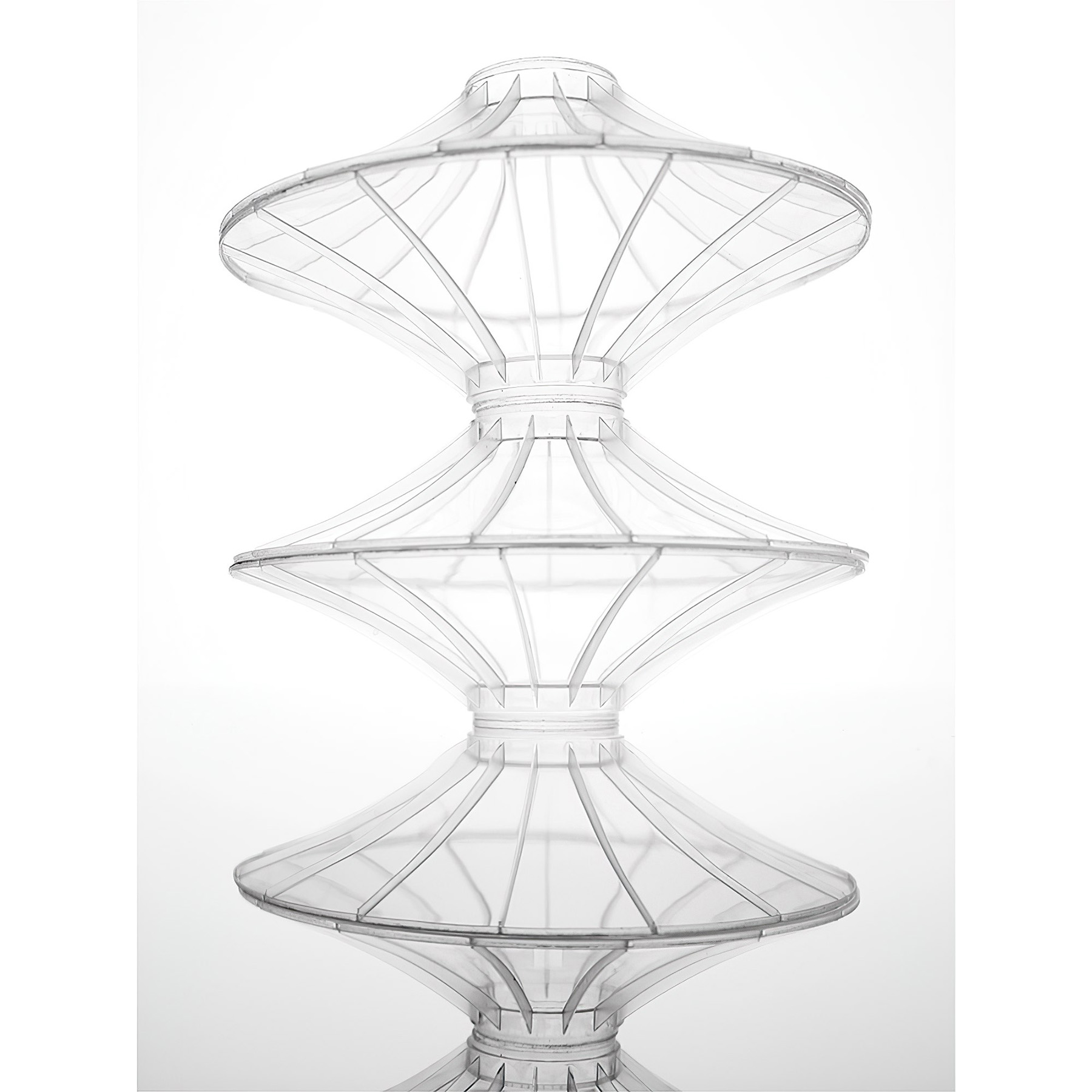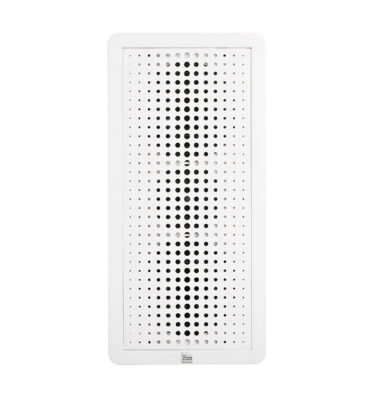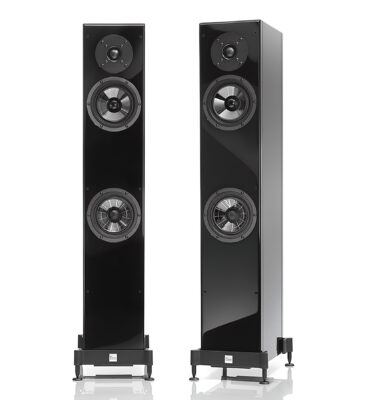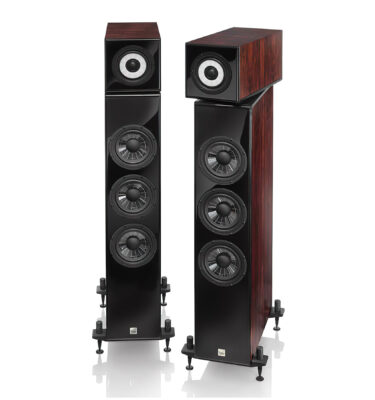Description
Revolution
Following the introduction of the flagship of our Klimt Series™, The Music, we present the smaller yet no compromise model, The Kiss.
As its larger sibling, The Kiss is based on the same revolutionary and patented Flat-Spider-Cone coincident driver system. This new design is able to produce the Platonic ideal of the entire critical seven octave human vocal range and beyond in a single, phase coherent time plain without any of the normal horn loading and compression present in most conventional designs. Not only does this technical innovation free the sound of virtually all mechanical interference, it also allows for great placement freedom that is normally not experienced nor expected in a reference speaker system.
The physics of this patented driver are an outgrowth of Vienna Acoustics’ longstanding use of reinforced cones designed to maximize strength at nodal multiples while keeping mass to a functional minimum. Flat cones actually do not provide stiffness, but we turned a disadvantage into an advantage by turning to our own patented Spider-Cone technology. This technology not only delivers the best weight – stiffness ratios of any construction, it also allows specific and calculated sound and impulse-response tuning by varying the quantity of ribs, their shape, their thickness, radial or concentric orientation and specified placements within critical positions. The only other construction close is in application is that of sandwich or honeycomb technology that has already proven to be too heavy for our application.
Basis for the cone material is our X3P in a proprietary mix with other materials for the optimum result of stiffness and inner-damping ratio combed with our Spider-Cone light-weight-framing on the cone’s rear wall. All cones are then produced by Vienna Acoustics in Austria. By using finite element analysis, Vienna Acoustics’ chief designer Peter Gansterer was able to create a radial-vaned structure cast into a flat cone that produces an enormously stiff, flat surface (thereby eliminating time and frequency specific phase shift across the driver surface). This is then combined with a special hand crafted silk dome tweeter using a special neodymium magnet structure placed in its center.
Form follows function
After the careful and time consuming creation of our new Flat-Spider-Cone coincident driver system, an appropriate partnering bass driver designed specifically for the demands of extended bass had to be created. For this process we again turned to both finite – element – analysis along with visiting our own patented Spider-Cone technology. The result is the creation of our entirely new patented 23cm ultra rigid NAWI cone. This new driver has extremely low mass while maintaining exceptional stiffness. By creating such a strong and low mass bass driver, we were then able to take full advantage of not only the highest grade crossover components, but also the purest crossover design employing a new proprietary, modified first order layout. This new crossover combined with our newly designed drivers offers the greatest phase coherency resulting in maintaining the greatest detail as well as offering greatest power and clarity in the lowest octaves. This further manifests itself in creating a reproduction of space that has thus far been absent from pedestal mounted loudspeakers.
The cabinet technology necessary to take advantage of these technical breakthroughs in driver and crossover design required further careful consideration. The separate top-unit enclosure is decoupled from the bass enclosure by a special high-tech, drawn aluminum swivel joint which allows optimum room tuning by enabling not only adjustments for rake, but also for toe-in. The construction of the top unit or Music Center shares the same internal volume and is sealed as is the Music Center of our larger model within the Klimt Series™, The Music.
Mated to this revolutionary driver system is a vented bass cabinet housing our newly developed bass driver. While initially striking, the fully decoupled Music Center allows the entire system to reach the absolute optimum in clarity and naturalness in sound by allowing careful optimization of both the bass cabinet while not compromising the mid and upper frequencies produced by the Music Center.
Vienna Acoustics – The Art of Natural Sound™
As always, the speakers´veneer and finish quality is constructed to only the highest standards. The Kiss is available in a true Piano Black Lacquer version as well as a beautiful Sapele natural wood veneer version.
Specifications
System type
- 3-way system, employing integrated subwoofers
Frequency response
- 36Hz – 20kHz
Bass drivers
- 23cm Patented Vienna Acoustics Spider-Cone
Midrange – Tweeter
- Coincident 18cm Patented Vienna Acoustics Flat-Spider-Cone midrange with 2.5cm hand crafted neodymium center vented silk dome tweeter
Sensitivity
- 89db
Impedance
- 4 ohms
Recommended power
- 50 – 180 watts
Speaker Weight
- 43kg / 95 lbs each
Speaker Dimensions (WxHxD)
- 273mm/10.75″ x 540mm/21.3″ x 540mm/21.3″
Stand Weight
- 23kg / 50 lbs each
Stand Dimensions (WxHxD)
- 273mm/10.75″ x 730mm/29″ x 530mm/21″ (including spikes)
Finishes
- Sapele, Piano Black
Why Would We Name a Speaker Line after a Painter?
It seemed only natural to name the absolute Reference Vienna Acoustics has ever created in homage to one of the most thrilling artists the city has ever unleashed – a man whose immense achievements in visual art were profoundly inspired by music.
Born just south of the capital in 1862, as a teenager Gustav Klimt studied architectural painting in Vienna before launching his early career as a painter of murals and ceilings. Before Klimt reached his thirtieth year, he had earned recognition from Austria’s emperor and a recommendation to join the faculty of Vienna’s prestigious Academy of Fine Arts. But such a conventional career was not to be for this passionate innovator.
“To the age its art, to art its freedom.”
Gustav Klimt started with the creation of the Beethoven Frieze for the Viennese Secession in 1897. The Secession was no dogmatic federation espousing artistic “rights” and “wrongs”; rather, this was a group of forward thinkers – with Klimt on top – exploring new departures in creation, urging artists of every persuasion – architecture, painting, music – to come together for the sake of progression. Just as important, the Secessionists were determined to bring that progression to the people, via publications and annual exhibitions.
Standing for the unconventional, for freedom from constraints of any kind, Klimt created a worldwide symbol for Jugendstil.
The Beethoven Frieze ranks among the major works of the Viennese Jugendstil and can only be comprehended in the context of this age and as a product of it – an age shaped by tendencies toward new departures in art, by an interest in international connections and by the attempt to bring the various arts together.
The Frieze belongs to the most significantcreations of Gustav Klimt, such as “The Kiss”, and the devoted music lover´s – and avowed Beethoven admirer´s – masterpiece “The Music”.
Art would never be experienced in quite the same way again.

